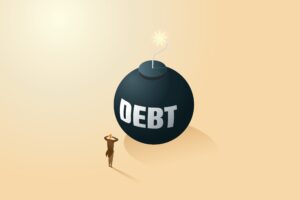The financial press has generated much excitement over the sudden increase in SPACs (Special Purpose Acquisition Companies) and the advent of NFTs (non-fungible tokens). Due to the large sums of money being showered on both, the parody skits on Saturday Night Live, and the involvement of “influencer financiers,” there is a lot of buzz. Where there’s buzzing, there are flies, and you know where flies like to congregate.
The sale of the Beeple NFT for $69 million and the fact that SPACs raised more than $80 billion through nearly 250 initial public offerings in 2020 (more than half of the money raised through IPOs that year and eight times (8X) what SPACs raised just two years before), has left most of us scratching our heads – huh?
Just because the investment structure is gaining popularity does not mean it is right for you… or anyone for that matter. The decision to invest in a SPAC is not an easy one and should not be undertaken if you cannot or do not plan to put in the arduous work of researching it, following it and its SEC (Securities and Exchange Commission) filings.
NFTs are another matter altogether. NFTs can be anything digital, but the recent excitement has been about digital artwork though last week CAL Berkeley announced the sale of internal paperwork with regard to scientific research that led to a Nobel prize award. Collecting NFTs, however, is much like art collecting (as compared with investing), though we would say, even more elusive (if not evanescent.)
SPAC Investing?
SPACs have received massive attention for a number of reasons: the large amounts of money invested into them; the celebrity names attached to them like Alex Rodriguez, Shaquille O’Neil, Kevin Durant and Paris Hilton, and because some view this as the regular guy’s access to investment opportunities that otherwise are restricted to “qualified “investors, I.e. private equity and venture capital.”
To be sure, the SEC has cautioned against the Celebrity SPAC. More significantly, well-known and well-respected financial writers like Larry Swedroe have taken SPACs to task for their misaligned incentives, high costs, and failure to meet expectations generally – HERE.
Investment Structure and Transparency
SPACs, according to the SEC, are “commonly referred to as blank check companies,” since they are established with no underlying business and with the purpose of merging with an existing business that then becomes a public company without going through the traditional IPO process. The sponsors who create the SPAC intend to use the funds they raise to acquire a company within a specified time period, typically within two years Nevertheless, a large number of the SPACs never consummate a deal. Money, a pro rata share of the current cash, is returned with interest but it is questionable as to whether there may have been more productive uses for that money. And the money returned is rarely equal to what went in since sponsors generally take 20% of receipts even when their own investment is minimal, so even if they have not bought a company in the two years, they have spent money looking for one.
After a company has been selected for acquisition, a SPAC will distribute a proxy or information statement. Then, if a shareholder does not like the selected business acquisition, they may choose to back out of the SPAC. Typically, SPACs sell their shares initially for ten dollars and each share includes a warrant for another share at a specified price and date in the future. Many initial investors redeem their share before the two years are up and retain the warrant. If many investors take this route to retain their capital, and with the 20% going to the sponsors, this can dilute capital reserves below the point where it is feasible to make an acquisition.
Return on Investment
ROI on a SPAC depends on factors like the chosen company for acquisition and market performance.
According to SPAC Insider, SPAC’s from 2009 to 2021 have shown an average annualized rate of return of 2.3 percent. While a few have shown returns as high as 28 percent, liquidations occur roughly 10 percent of the time.3
NFT Investing?
NFTs are digital files attached to the blockchain. If you know anything about digital currencies, you’re probably aware that these blockchain codes are what identifies a digital “coin” and makes it tradeable to those who accept that sort of payment.
In this case, the code identifies the digital file as a unique item. This may be any sort of digital file from an image, a cartoon, music or a video file. As cited above, CAL Berkeley is attempting to cash in with the digital file of internal paperwork.
Fungible vs. Non-Fungible
If you trade one digital currency “coin” with another, they have the same value (despite having different blockchain codes). The same goes for regular currency. One dollar bill is worth the same as any other dollar bill. That’s “fungible.”
A “non-fungible” item would be a unique or rare item, which may have a different value. The difference would be akin to an original Picasso and a painting you bought at a thrift store. While one is worth more than the other, they both have unique characteristics. That unique characteristic is “non-fungible.”
What Are the Financial Risks Involved in NFTs?
As indicated above, NFTs are very much akin to tangible collectibles. My mom used to collect Hummels – those little porcelain figurines. Some of them are still worth real money, most of them are not… depends on which ones remained popular over the years. Like all collectibles, NFTs have a risk that the market will move past them – they will cease to be collectible. Anyone that collected baseball cards 40 years ago knows what this is like.
While the blockchain code might assure you that you are buying an “original” NFT, there’s nothing to indicate that the token in question will remain popular and hold or gain value. There’s also a possibility that NFTs or categories of NFTs are a fad that will die out and lead to plummeting values and mass disappointment. No one knows.
Like any collectible, non-fungible item, there is significant risk to using NFTs as an investment tool. While it’s all abuzz now, there’s no way to know if these latest blockchain-coded offerings will have any staying power. Much like the digital currencies they may share the blockchain with, it’s important to remember that their value stems directly from the collective interest in them.





